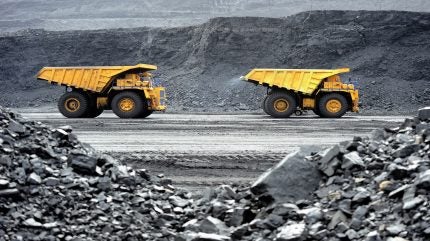
3D printing has made its way into the home construction market, though with an unfortunate twist. Conventional printers use conventional cement, which has a heavy carbon footprint. Fortunately, more sustainable alternatives are at hand, and a new cluster of rental lodgings in the touristy town of Round Top, Texas, is showing them off.
3D Printing As A Spectator Sport
If you’re wondering why Round Top, that’s a good question. Round Top has a listed population of just 90 souls, but it is well known among antique-ing circles. Round Top was dubbed “the Aspen of Texas” back in 2016 on account of a high dollar housing boom in the surrounding area, so it seems like a good place for small homes to make a big impression.
Small is the word. The five lodgings are part of a cluster called Casitas @ The Halles, ranging from a 400-foot studio to a 900-footer with two bedrooms, aimed at accommodating visitors on a mission to shop.
The squirting of the shells took place during one of Round Top’s regularly scheduled antiques shows, and Round Top correspondent Rebecca Sherman was there to render the play-by-play.
“A massive preprogrammed robotic arm swiftly lays down walls layer by layer, extruding the mixture from a large nozzle,” Sherman observed. “The mesmerizing process, which makes a satisfying whirring sound as it moves along, might be compared to icing squeezed out of a giant confectionery bag.”
“It’s so fascinating to watch that The Halles is setting up tables and chairs for people to experience in real time the Casitas being 3D built, with cocktails served,” Sherman added.
She was careful to note that the 3D printing process only takes one day, but it is followed up with two months’ worth of finishing work. That would involve many more cocktails served, if one were inclined to bear witness.
3D Printing With Green Cement
The builder behind the printer is Hive 3D. To supply its 3D printing machine, Hive turned to an alternative cement material called PozzoCEM Vite, made by the Utah company Eco Material Technologies, which bills itself as “the largest producer of sustainable cementitious materials and near-zero carbon cement replacement products in North America.”
“The PozzCEM Vite® used as part of the construction at The Casitas @ The Halles is one of the next generations of Green Cement products and replaces 100% of portland cement in concrete, has 92% lower emissions and sets much faster than traditional Portland cement,” Eco Material explains. The company also makes an alternative cement for infrastructure projects called PozzoSlag, which replaces 50% of the portland cement in concrete.
To pump up the sustainability angle a bit more, Hive and Eco Materials used locally sourced aggregates to mix the concrete for 3D printing.
The Cement Problem
The greening of the cement industry has become a top priority for 3D printing and the rest of the construction sector, too.
“Reducing cement plant GHG emissions and product carbon intensity are important goals for both the cement industry and its customers,” the US Environmental Protection Agency observed back in 2019.
“Cement manufacturing is energy intensive and a major source of greenhouse gas (GHG) emissions from the industrial sector,” they added, noting that 92 cement plants in the US reported a total of 67 million metric tons of carbon dioxide equivalents, accounting for about 10% of emissions reported by the entire industrial sector.
Globally, cement accounts for 7% of all carbon dioxide emissions. Add in the carbon footprint of mixing concrete, and you get this observation: “If concrete were a country, it would be the third largest emitter of greenhouse gases on Earth, behind only China and the United States.”
“Cement plants are a significant source of sulfur dioxide, nitrogen oxide and carbon monoxide,” EPA adds for good measure, leading to many unintended consequences. EPA lists “ground-level ozone, acid rain, global warming, water quality deterioration, and visual impairment” for nitrogen oxide, as well as acid rain, respiratory problems and cardiovascular issues for sulfur dioxide, and carbon monoxide is not nice, either.
“Key strategies to cut carbon emissions in cement production include improving energy efficiency, switching to lower-carbon fuels, promoting material efficiency (to reduce the clinker-to-cement ratio and total demand), and advancing innovative near zero emission production routes,” advises the International Energy Agency.
So, What Is The 3D Printing Industry Doing About That?
Researchers have been assessing the sustainability and performance of alternative binders for 3D printing, and they have spotted indications that moving away from conventional cement-making materials could have a significant impact on the carbon footprint of the concrete used in 3D printing.
“Cement-based construction 3D printing (C3DP), also known as cement-based additive manufacturing or digital construction, is an emerging technology that, while omitted from all current roadmaps for decarbonizing the cement sector, has a potential of becoming a climate solution for the cement sector, reducing the embodied carbon in new constructions,” noted the authors of a study published in the journal Nature last February.
They point out that half of the total carbon dioxide emissions related to conventional cement production come from the chemical breakdown of limestone into a reactive material called clinker, which explains why taking limestone out of the picture could make a big difference.

“New low-carbon 3D printable cementitious mixtures can be developed with supplementary cementitious materials (SCMs) including industrial wastes (fly ash and slag) and natural materials (clay), alternative binders (geopolymers), and recycled materials (conventional concrete), reducing emissions on the production side of the cement supply chain,” they advise.
If you caught that thing about fly ash, the US has an ample supply of that stuff as the byproduct of burning coal to make electricity, among other uses.
Fly ash is the lightest, powdery coal byproduct. It makes up about half the content of coal ash. If that rings a bell, you may be thinking of the coal ash spills that result when the something goes wrong with a coal ash dump, of which there are hundreds in the US.
Coal ash dumps were not regulated until they fell on the shoulders of the US Environmental Protection Agency in 2015, following a horrific billion-gallon spill of ash slurry in Tennessee. Ash recyclers are currently capturing more than half of new coal ash produced in the US, with most of it going to make cement and concrete. However, remediation has barely touched those old impoundments.
A scaled-up 3D printing industry could help. With 746 ash impoundments scattered around 43 states, there should be enough to keep those printers squirting for years to come.
Find me on Spoutible: @TinaMCasey or LinkedIn @TinaMCasey or Mastodon @Casey or Post: @tinamcasey
Image: 3D printed homes under construction, courtesy of Hive 3D.
I don’t like paywalls. You don’t like paywalls. Who likes paywalls? Here at CleanTechnica, we implemented a limited paywall for a while, but it always felt wrong — and it was always tough to decide what we should put behind there. In theory, your most exclusive and best content goes behind a paywall. But then fewer people read it! We just don’t like paywalls, and so we’ve decided to ditch ours. Unfortunately, the media business is still a tough, cut-throat business with tiny margins. It’s a never-ending Olympic challenge to stay above water or even perhaps — gasp — grow. So …




